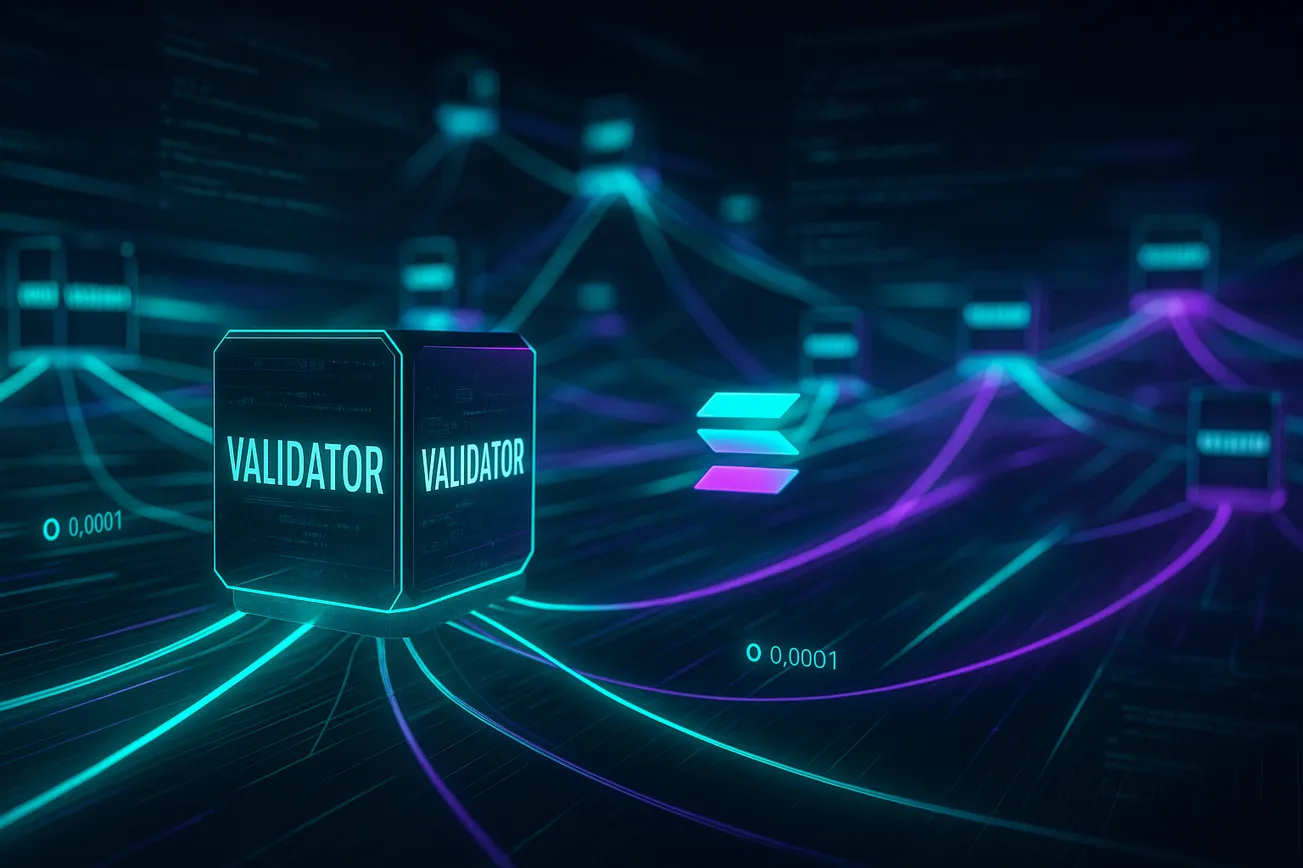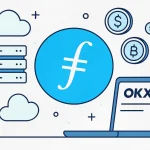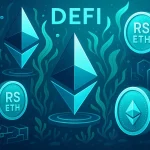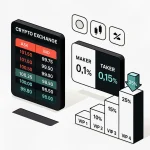If you’ve heard about blazing-fast transactions, tiny fees, and thriving on-chain apps, you’ve probably asked: what is Solana(SOL), and why does it matter? This in-depth guide breaks down Solana’s design, how it achieves its performance, what SOL is used for, where the ecosystem is heading, and how to get started safely—including a simple path to buy SOL.
Quick takeaway: Solana is a high-performance, smart‑contract blockchain built for speed, scale, and consumer-grade apps. It uses a unique time-keeping mechanism called Proof of History (PoH) alongside a set of optimizations to keep fees low and throughput high.
TL;DR
- Solana is a Layer-1 blockchain designed for high throughput and low fees.
- It combines Proof of History with a Proof of Stake consensus (Tower BFT) to order transactions efficiently.
- Real-world fees are typically fractions of a cent, enabling payments, DeFi, NFTs, and on-chain experiences without sticker shock.
- The ecosystem includes wallets (Phantom, Solflare), DEXs (Orca, Raydium), aggregators (Jupiter), and consumer apps (payments, gaming, social).
- You can acquire SOL on trusted exchanges; new users often start with Bitget and apply the referral code via this CTA: Use Bitget with code cryptonew0.
What is Solana(SOL)?
Solana is a public, open-source blockchain that aims to deliver web-scale performance for decentralized applications (dApps). It’s designed to handle large volumes of transactions quickly, letting developers build experiences that feel more like mainstream web or mobile apps than slow, fee-heavy blockchain interactions.
At the heart of Solana’s approach is a verifiable method of tracking time called Proof of History. By cryptographically “timestamping” events, Solana reduces coordination overhead in the network and helps nodes agree on the order of transactions more efficiently.
Why people care
- Speed and UX: Block times are typically sub-second, with low latency and near-instant finality in normal conditions.
- Low fees: Microtransactions become feasible, powering use cases like in-app tips, on-chain orders, and gaming.
- Scale-first design: A monolithic chain that prioritizes throughput without relying on many external layers for basic usability.
How Solana works under the hood
Solana’s architecture is a bundle of optimizations that, together, push performance.
- Proof of History (PoH): A cryptographic clock that lets the network agree on a common timeline of events. Validators use a sequence of hash outputs to prove time has passed, streamlining leader scheduling and transaction ordering.
- Tower BFT: A practical Byzantine fault tolerance consensus that builds on PoH to finalize blocks efficiently.
- Gulf Stream: Moves transactions to the edge of the network—validators prefetch and forward transactions, reducing mempool pressure.
- Turbine: A block propagation protocol that breaks data into small pieces and spreads them across the network, improving bandwidth usage.
- Sealevel: Solana’s parallel smart contract runtime. It executes many non-overlapping transactions at once, maximizing hardware utilization.
- Pipelining: Hardware-friendly design that stages tasks—fetching, verifying, writing—so CPUs, GPUs, and network resources work concurrently.
- Cloudbreak and Accounts Model: Optimized data structures for accounts and state, enabling high performance reads/writes.
Together, these features let Solana process large numbers of transactions at low cost while keeping the developer experience flexible.
Performance and fees
- Throughput: Solana targets very high throughput, with real-world activity frequently in the hundreds to thousands of transactions per second depending on network conditions and demand.
- Latency: Sub-second block times aim to deliver responsive UX.
- Fees: Typically fractions of a cent. This makes microtransactions practical and keeps the door open for consumer-grade experiences.
Note: Actual throughput and latency vary with network conditions, validator configurations, and software versions. Solana has iterated through periods of congestion and reliability work; upgrades and client diversity continue to improve resilience.
SOL token explained
SOL is the native asset of the Solana network. It is used for:
– Paying transaction fees and rent for on-chain storage.
– Staking to secure the network and participate in consensus (via delegated Proof of Stake).
– Governance and ecosystem alignment as projects integrate SOL into their tokenomics or utility.
Inflation: Solana launched with an inflation schedule that decays annually from an initial rate (commonly cited at around 8% at genesis) toward a long-term rate (commonly cited near 1.5%). A portion of fees is burned, offsetting some issuance. The exact supply evolves over time; always verify current data from the official explorer or documentation.
Staking SOL: how it works and what to know
Solana uses delegated Proof of Stake. You can delegate your SOL to a validator to help secure the network and earn rewards.
- Choose a wallet: Phantom or Solflare are popular. Hardware support via Ledger is common for enhanced security.
- Pick a validator: Consider commission, uptime, and community reputation. Distribute across multiple validators to diversify.
- Risks: While slashing events are rare, a validator misbehaving (e.g., double-signing) could be penalized. Smart contract risks exist if you use liquid staking protocols.
- Liquid staking: Protocols like Marinade or Jito offer liquid staking tokens that can be used in DeFi while you earn staking yield. Understand smart contract and market risks before participating.
Wallets and tools
- Wallets: Phantom, Solflare, Backpack. For cold storage, use Ledger.
- Explorers: Solana Explorer, Solscan.
- Docs and dev: Solana Docs. If you’re building, start with Sealevel programming model and Anchor framework.
What can you build on Solana?
Solana’s low fees and quick finality make it suitable for:
- DeFi: DEXs like Orca, AMMs and perps like Raydium and Drift, and aggregators like Jupiter reduce slippage and improve liquidity.
- Payments: With Solana Pay, merchants can accept crypto with near-zero fees and instant settlement.
- NFTs and media: Marketplaces such as Magic Eden and compressed NFTs for mass minting.
- Consumer apps: Gaming, social, tipping, ticketing—use cases where sub-cent fees change the economics of engagement.
- Real-world integrations: Projects like Helium’s migration brought telecom data on-chain; compute and rendering networks like Render highlight how high-throughput chains can support new types of workloads and reward mechanisms.
Solana vs Ethereum (and rollups)
A common question after “What is Solana(SOL)?” is how it compares with Ethereum.
-
Architecture
- Solana: Monolithic Layer-1 prioritizing high throughput on a single global state with parallel execution.
- Ethereum: Base Layer-1 secured by a vast validator set, with scaling via rollups (modular approach) that handle execution off-chain and post data back for security.
-
Trade-offs
- Solana: Great UX from low fees and speed; must continually optimize for reliability and decentralization as hardware requirements evolve.
- Ethereum + Rollups: Strong security guarantees and client diversity at L1; UX depends on the rollup you use, with bridging steps and varying fee models.
Many teams build cross-chain and optimize for the strengths of each approach. Your choice often hinges on app requirements—latency, throughput, and cost tolerance.
Reliability, clients, and the road ahead
Solana experienced notable outages and congestion in earlier years, which sparked major investments in network stability. Workstreams include:
- Client diversity: In addition to the core validator client, the Firedancer client by Jump Crypto is under active development to improve performance and resilience through independent implementation.
- Fee markets and local priority fees: Mechanisms to reduce spam and prioritize urgent transactions during peak demand.
- Upgrades: Continuous improvements to the scheduler, banking stage, and QUIC-based networking stack.
These steps aim to make performance predictable at scale while preserving the cost advantages that define the chain’s UX.
How to buy SOL safely and get started
If you’re new, the easiest path is a reputable exchange with strong security practices.
- Create your account on Bitget. For perks and tracking, register via this referral CTA: Join Bitget with code cryptonew0.
- Complete KYC and enable 2FA (authenticator app, not just SMS).
- Deposit fiat or crypto, then buy SOL on the spot market.
- Withdraw to your self-custody wallet (Phantom or Solflare) for on-chain use. Always test with a small amount first and verify the correct network (Solana mainnet) and address.
Pro tip: Bookmark the correct exchange URL and wallet sites. Phishing pages are a common attack vector.
Using SOL on-chain: a quick starter
- Fund your wallet: Send a small amount of SOL to pay for fees.
- Explore: Swap on Jupiter or Orca, try a mint on Magic Eden, or make a micro-tip to experience sub-cent fees.
- Stake: Delegate SOL within Phantom or Solflare to earn rewards. Monitor validator performance and commissions.
- Track activity: Use Solana Explorer or Solscan to verify transactions.
Security best practices
- Self-custody hygiene: Write down your seed phrase offline, never enter it on any website after wallet creation, and use hardware wallets for larger holdings.
- Transaction reviews: Check program IDs and permissions before approving.
- Beware of giveaways and airdrops: Verify official channels; scammers exploit hype cycles.
- Start small: Practice with tiny amounts until you’re comfortable with Solana’s account model and fee mechanics.
Price drivers and risks to consider
- Adoption: The more people use DeFi, payments, and gaming, the more organic demand for block space.
- Competition: Other high-performance L1s and Ethereum rollups push constant innovation.
- Regulatory landscape: Rules for exchanges, stablecoins, and tokens can influence liquidity and user access.
- Network reliability: Upgrades aim to reduce congestion/outages; client diversity and fee markets are critical.
This is not financial advice. Do your own research and never risk funds you cannot afford to lose.
Common FAQs
-
What is Solana(SOL) used for?
- Paying network fees, participating in staking, and powering dApps including DeFi, NFTs, payments, social, and gaming.
-
Is SOL deflationary?
- SOL has an inflation schedule that decays over time. A portion of transaction fees is burned, which can offset issuance, but overall supply dynamics depend on network usage and protocol settings.
-
How fast are transactions?
- Often confirmed in under a second with low fees, though finality and perceived speed vary with network conditions.
-
Which wallets are best?
- Phantom and Solflare are user-friendly; Ledger adds hardware-level security.
-
Where can I buy SOL?
- Start with Bitget. For an easy onboarding path, use this dedicated CTA: Buy SOL on Bitget with code cryptonew0.
Developer corner
If you’re a builder, Solana’s Sealevel runtime lets you define read/write account sets so transactions that don’t conflict can run in parallel. Recommended steps:
- Read the Solana Docs and learn the account model.
- Prototype with Anchor for ergonomic development and IDL generation.
- Profile your program: Ensure you declare correct account access for parallelism; avoid unnecessary contention.
- Test under load: Use devnet, then testnet; measure compute units, I/O, and transaction packing efficiency.
Handy links
- Official docs: docs.solana.com
- Explorer: explorer.solana.com
- Wallets: Phantom, Solflare
- DeFi: Jupiter, Orca
- NFTs: Magic Eden
- Payments: Solana Pay
- Onboarding and trading: Start on Bitget with code cryptonew0





